- Connecting audio
- Audio PC
- Raspberry & Co
- All in Ones
- Bluetooth
- Chromecast
- Streaming audio player
- Music server
- USB Audio
- Real-time audio over IP
- FireWire DAC
- Multi-channel DAC
- NAS
- Remote control
- Vinyl rippers
- Acoustic materials
- Active crossover
- Active speakers
- Single driver speakers
- Invisible speakers
- Sound card
- Digital room correction
- Headphone
- Portable media players
Vinyl ripping
Want to digitize your vinyl collection?
Today there are a couple of options:
Standalone systems
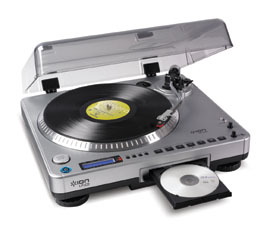
They record albums directly to CD (or iPod or flash memory, depending on the system). This is the easiest way to digitize your LPs and 45's. It's also the crudest.
Digital turntables
They have an AD converter on board. Output is mostly USB but some offer SPDIF.
You need recording software on the PC.
Analogue Turntables
These are the traditional ones.
You need a phono stage to bring the signal to line level, an AD converter and recording software. This setup allows you to choose each individual component.
Instead of a phono stage you can use a linear amp like a microphone amp and apply the needed RIAA correction using software.
Software like Pure Vinyl allows you to work this way.
Recording
A lot of debates about bit depth and sample rate can be found on many audio forums.
According to Shannon-Nyquist your sample rate should be the double of the highest frequency.
Vinyl can contain signals up to 25 kHz (but higher values are reported) so 44.1 kHz (Nyquist=22) is probably a bit at the low site.
When doing the AD conversion any signal in excess of half the sample rate generates an error.
The input should therefore be band limited.
Low sample rates like 44.1 kHz forces you to use the same steep filtering (brick wall) as in the first generation CD players.
Higher sample rates allow using a smoother filter.
Vinyl can have a dynamic range of 70 dB (but often limited to 50 dB) so 70/6=12 bits should do. We can hear certain tones to 30dB below the noise level. So 70 + 30 dB = 90dB.
16 bits should do the job.
But you need some headroom and in case of post-processing it is beneficial to have a 24 bit format.
Ripping vinyl is a hell of a lot of work.
Even if 24/88 is overkill as some advocate, I rather would go for the overkill.
Some recording software can be found here.
RPM
There are many things you can adjust with a turntable.
One of the most obvious things to check is the speed.
Use a strobe platter to do so.
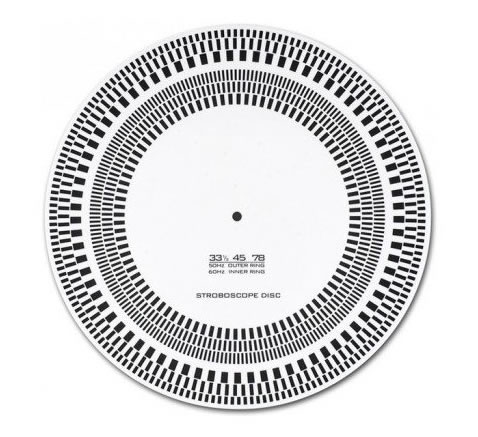
Obvious I must be old recommending a strobe, because there is an app for it.
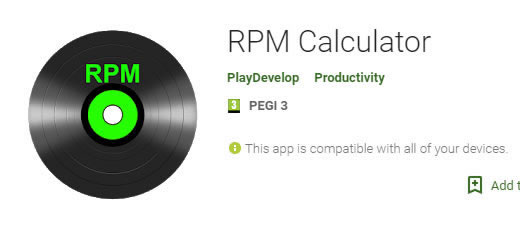
RIAA
Because of the vinyl revival, youngsters buy a turntable only to discover it sounds horrible.
What they don’t realize is that you can’t connect a turntable straight to a line in.
You need a phone input.
Not only to bring the weak output of a TT to line level but also to apply the RIAA correction.
In a nutshell, because the groove cannot accommodate large amplitudes, the bass has to be lowered.
Because vinyl it self has a rather rough surface, the treble is boosted to improve the SNR (Signal to Noise Ratio).
On playback, the opposite is done.
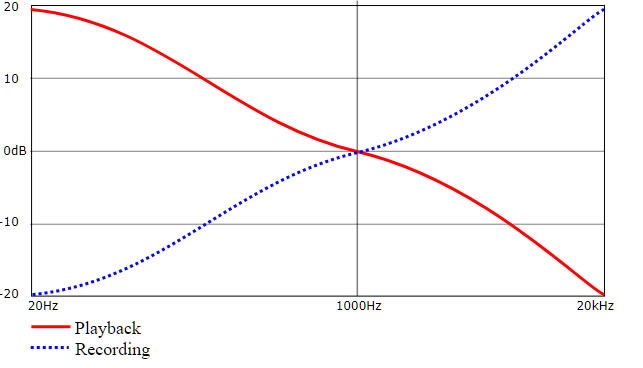
RIAA was implemented as a standard around 1954.
Before the time, each record company applied its own standard.
Lovers of 78 rpm recording know this.
Needle
78 rpm records were made of shellac and had a wide (mono) groove.
This limited the playing time to 5 minutes per side.
Later (Columbia, 1948) they switched to vinyl (PVC) and a much smaller groove increasing playing time to 23 minutes per side. This became a industry wide standard.
Cartridges at that time had 2 needles. You could simply flip it.
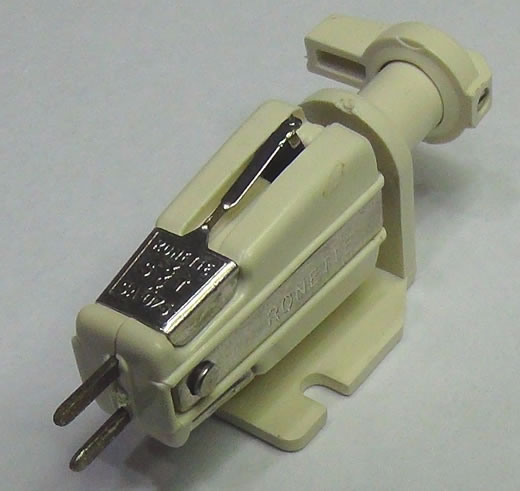
Ronette ceramic mono cartridge with both 78 rpm and 33/45 (micro groove) needles.
Sony PS-HX500 US$599,99

A turntable with USB out ( DSD 2.8 MHz or 5.6 MHz )
33 1/3 r/min, 45 r/min
Phone amp (on/pass thru)
AD converter
If the turntable has analog out ,you need an AD converter to digitize.
This is typically a sector dominated by pro-audio companies like Prismsound, Metric Halo, etc
Older models often have a firewire interface.
Newer models support USB 2.
Prismsound Lyra 2 $3,225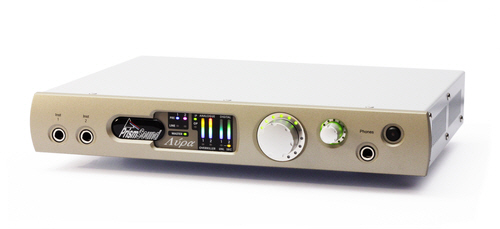
RME Babyface PRO FS € 698
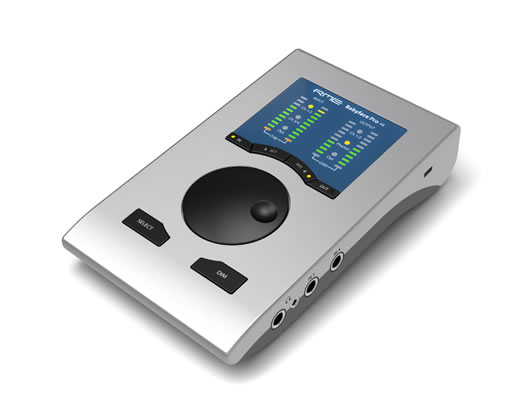
Today, the babyface comes with a femto clock.
It is bus powered but can be used standalone with a DC wallwart.
RME ADI-2 Pro €1.599,00
AD/DA converter with a lot of options.
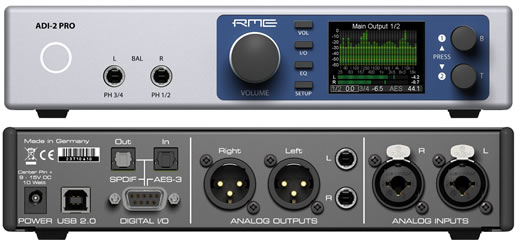
The USB 2.0 port is fully Class Compliant (UAC 2)
Extensive headphone options
- Dual headphone out with individual volume control allowing for level matched comparison.
- Can also be used to drive one headphone balanced.
- Five bands parametric EQ
- Tone control (bass/treble)
- Loudness with adjustable gain
- Crossfeed
DA Filters: Short Delay Sharp, Short Delay Slow, Sharp, NOS.
Focusrite Scarlett 2i2 US$ 150
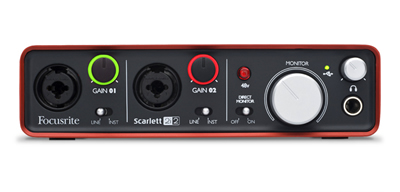
- 2 in / 2 out USB audio interface
- 96 KHz, 24-bit conversion
- 2 Focusrite microphone preamplifiers
A review at ASR
Korg DS-DAC-10R $599
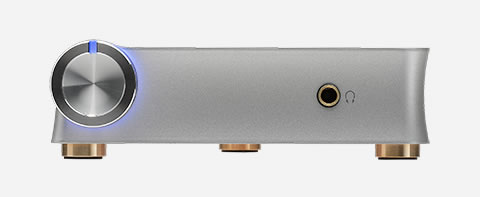
1-bit USB-DAC/ADC with line and phono inputs.
Input Format (USB):
DSD: 2.8224MHz/5.6448MHz, 1bit
PCM: 44.1kHz/48kHz/88.2kHz/96kHz/176.4kHz/192kHz, 16bit/24bit
Click and Pops
There is software to remove clicks and pops.
This requires you to make a needle drop.
There are sulutions to do it in real time
Sweetvinyl Sugarcube SC-1 $1,999.00
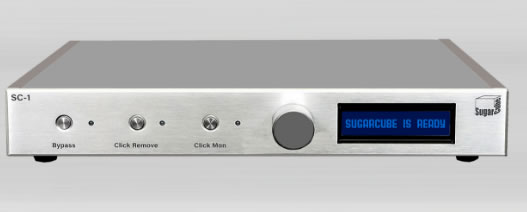
Removes pops and clicks in real time.
The SC-2 also records digitally - providing automatic LP metadata identification and tagging, track splitting and recording to connected USB storage.
Basically boxes like these have a AD converter, some program doing the de-clicking and a DA converter.
Indeed, a mini PC with a sound card can do the job as well
Real Time Click Repair MiniPC Setup - Steve Hoffman Music Forums
Turntable information, images, articles and reviews from around the world. We have user manuals, service manuals, schematics and brochures available for free download. Created as an archive for classic, often unobtainable turntable manuals, we also provide information on many current products complete with links to manufacturers home pages and other online resources.
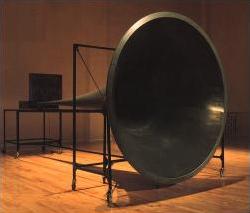
Nimbus Records transfer their 78s using an acoustic horn gramophone.
The only 'electric' part of the whole playback process is the Technics SL-15 turntable.
Vinyl archiving – Werner Ogiers
An article covering aspects like AD-converters, sample rate, LP production process, recording software.
Guide to Converting Analog Vinyl To Digital Files Using Windows - Mitch Barnett
How vinyl records are made - Do it


